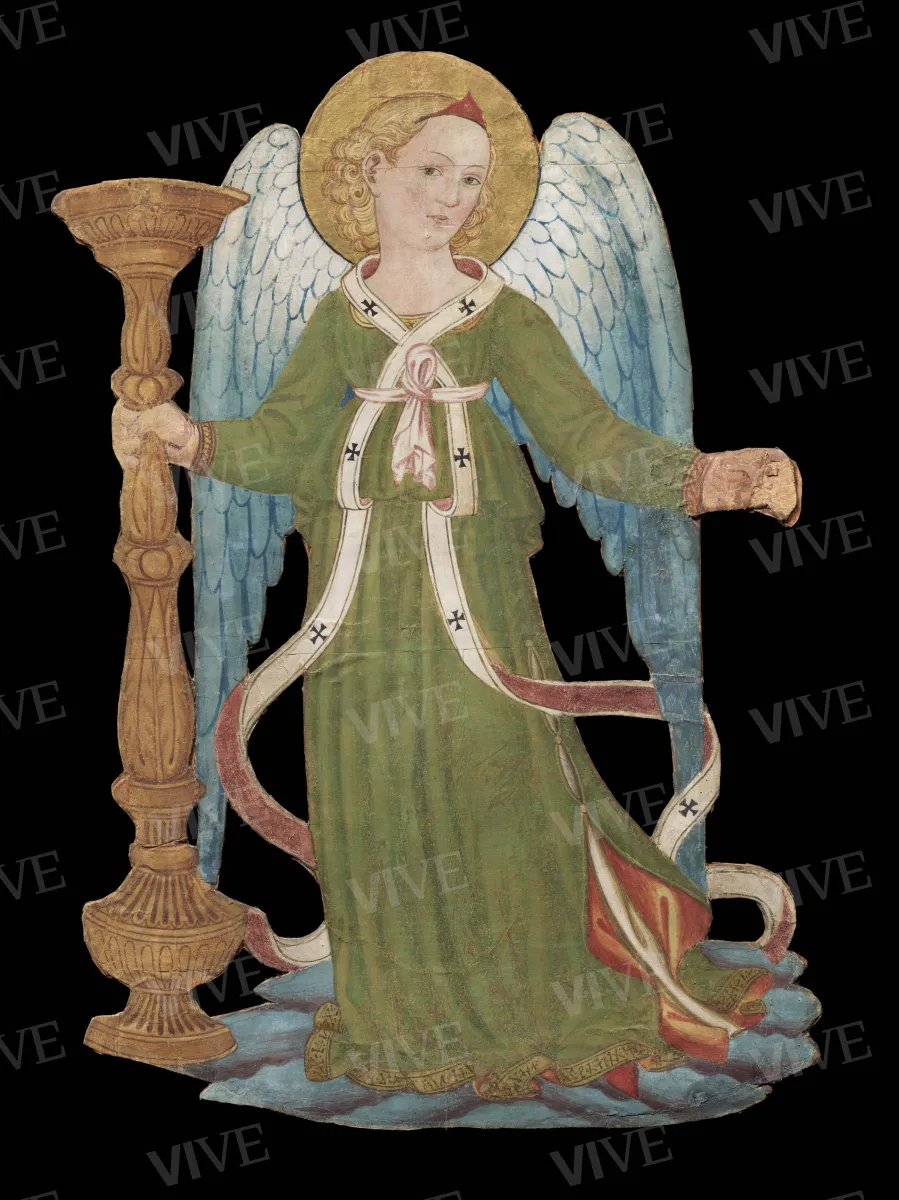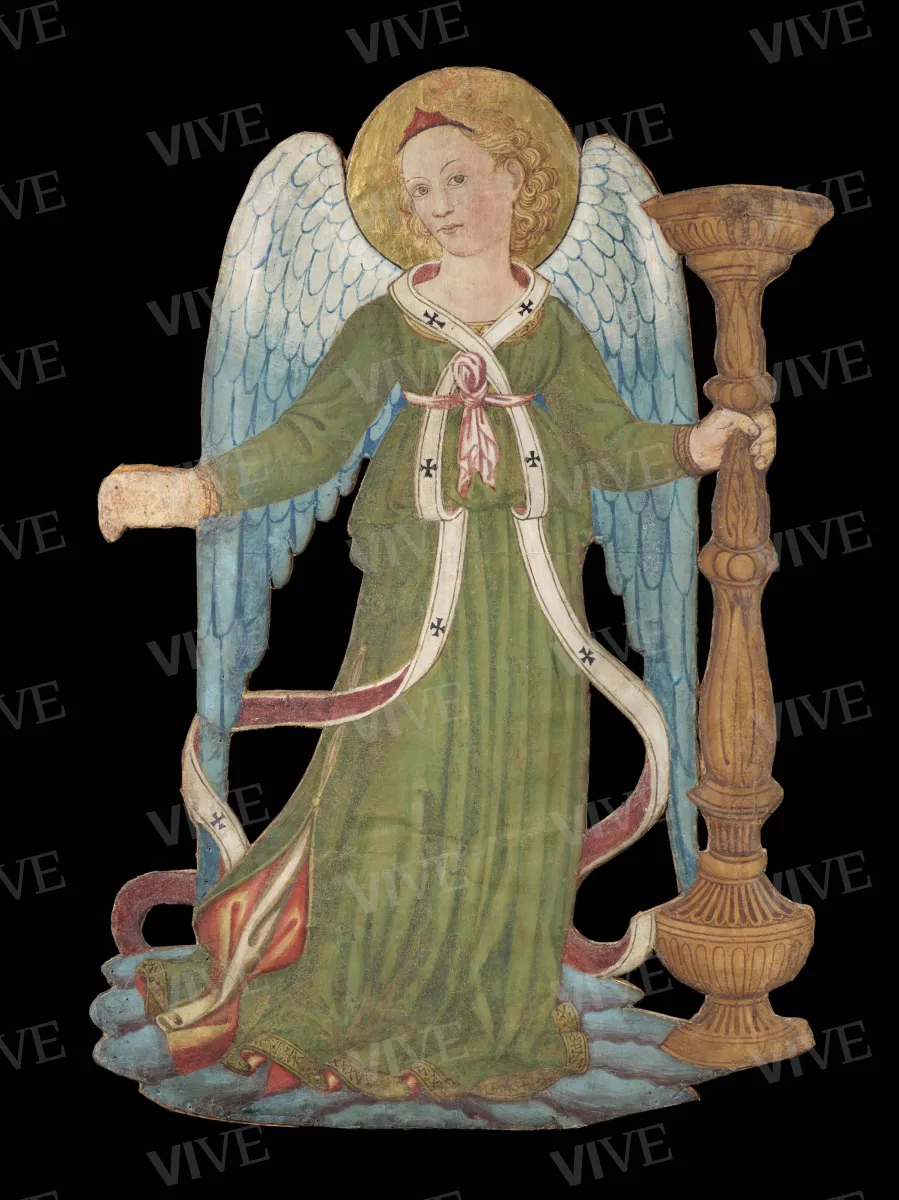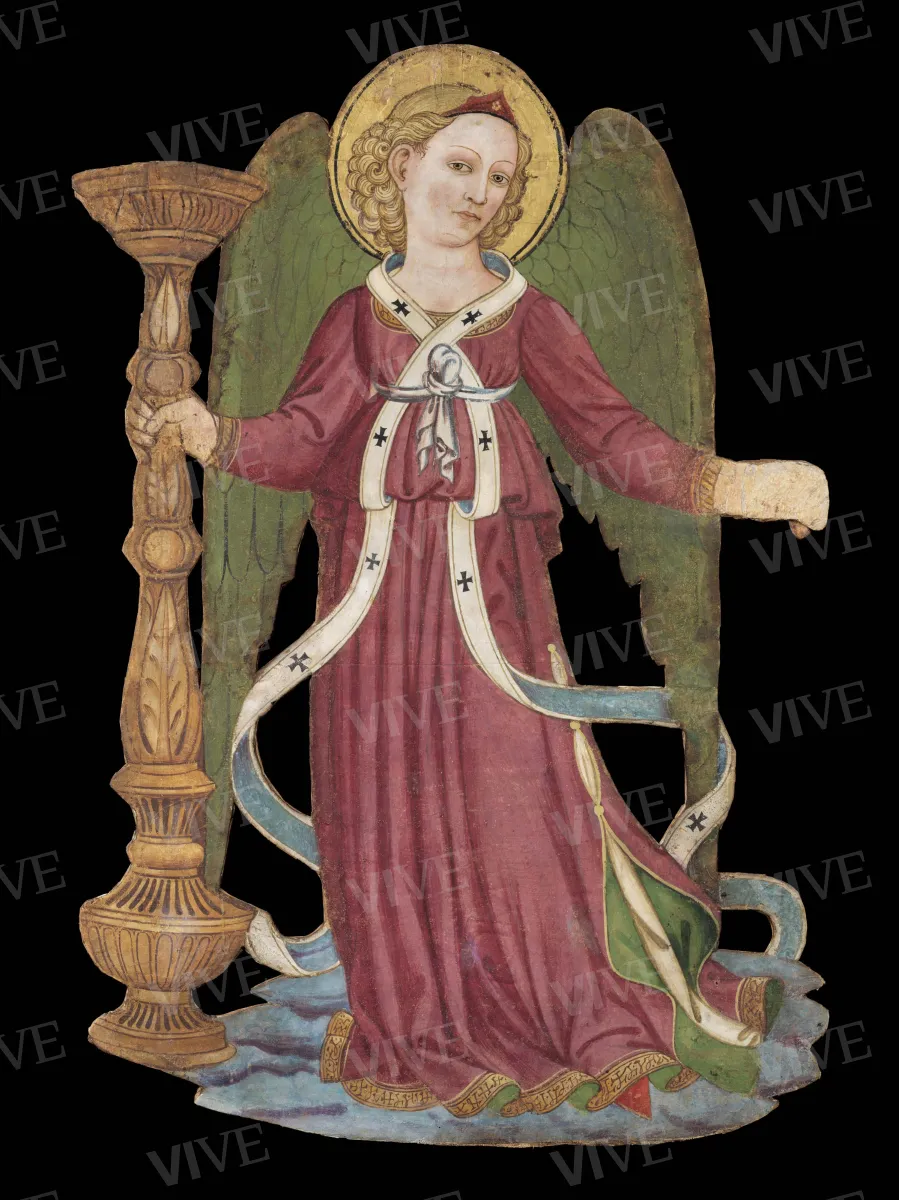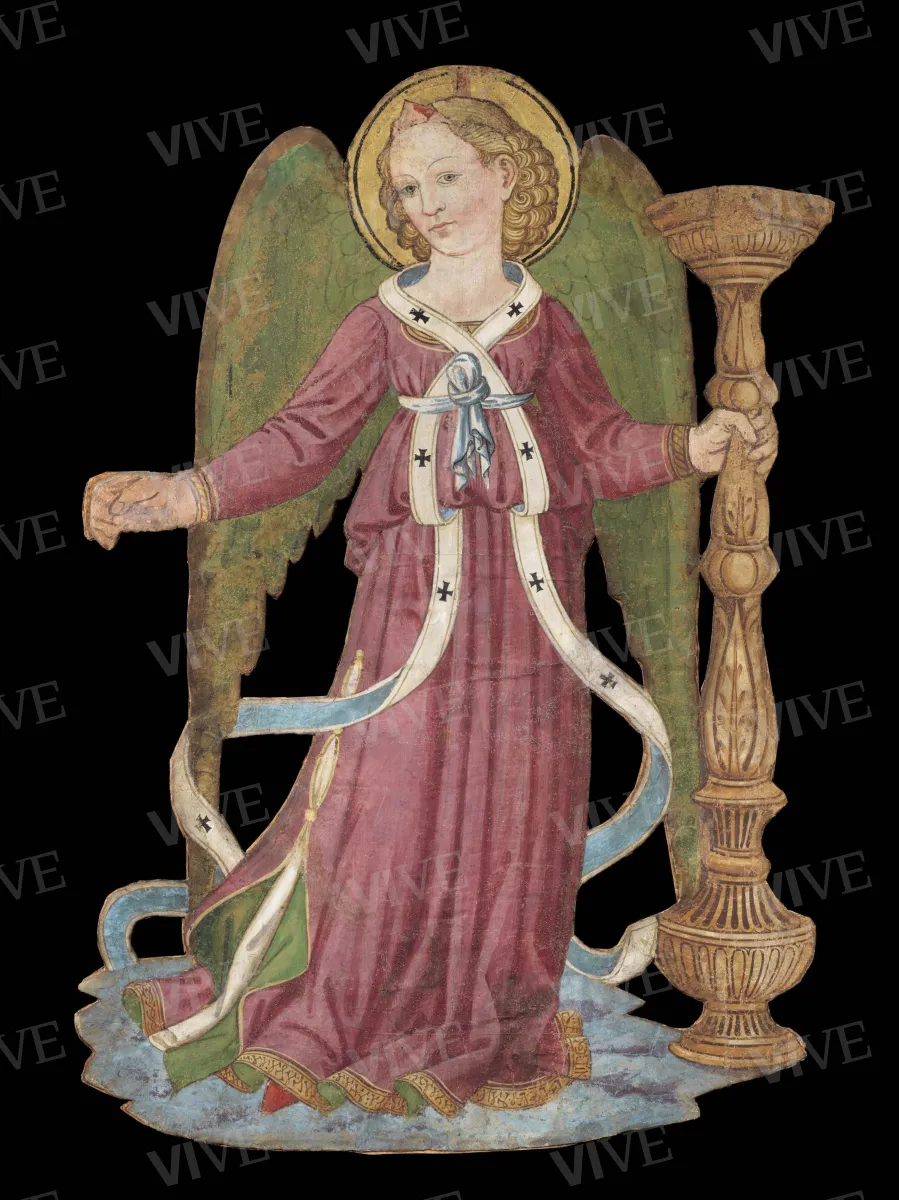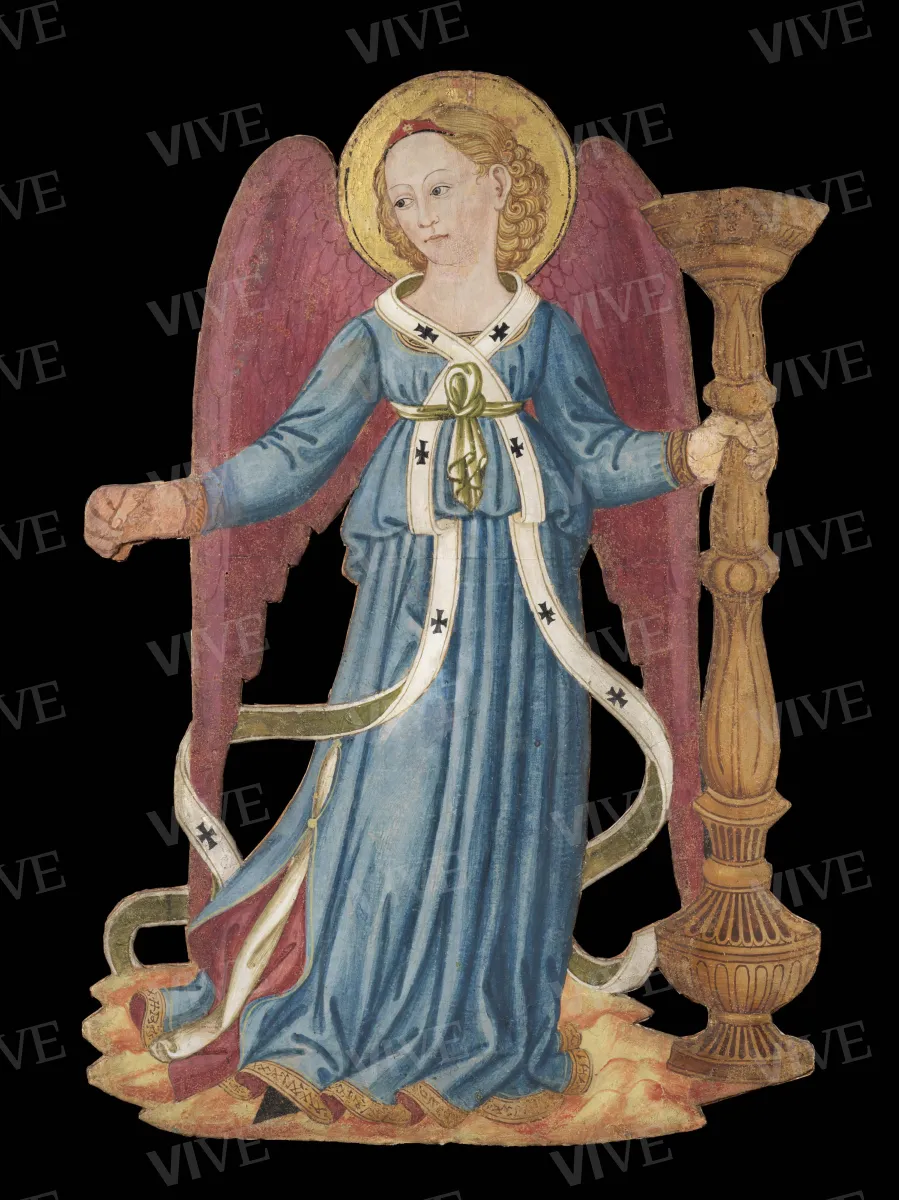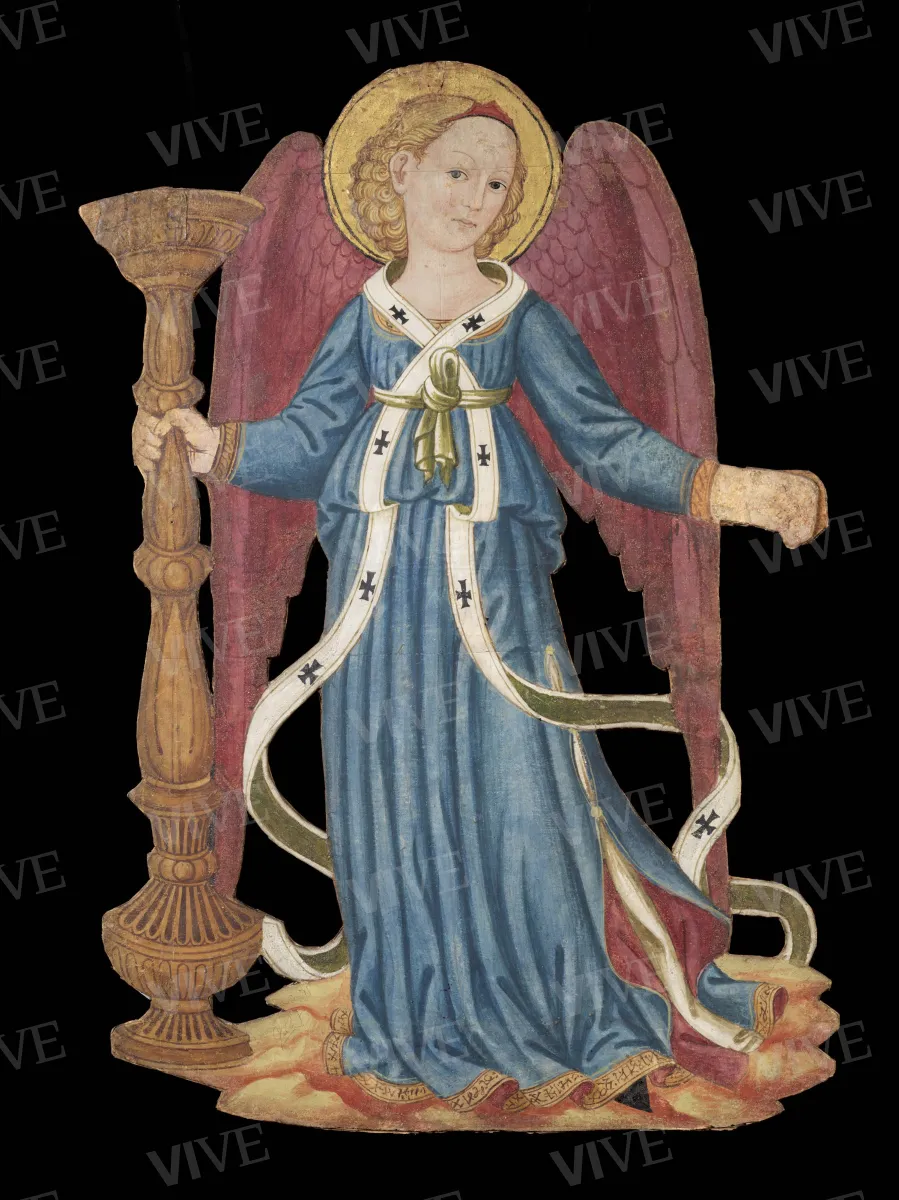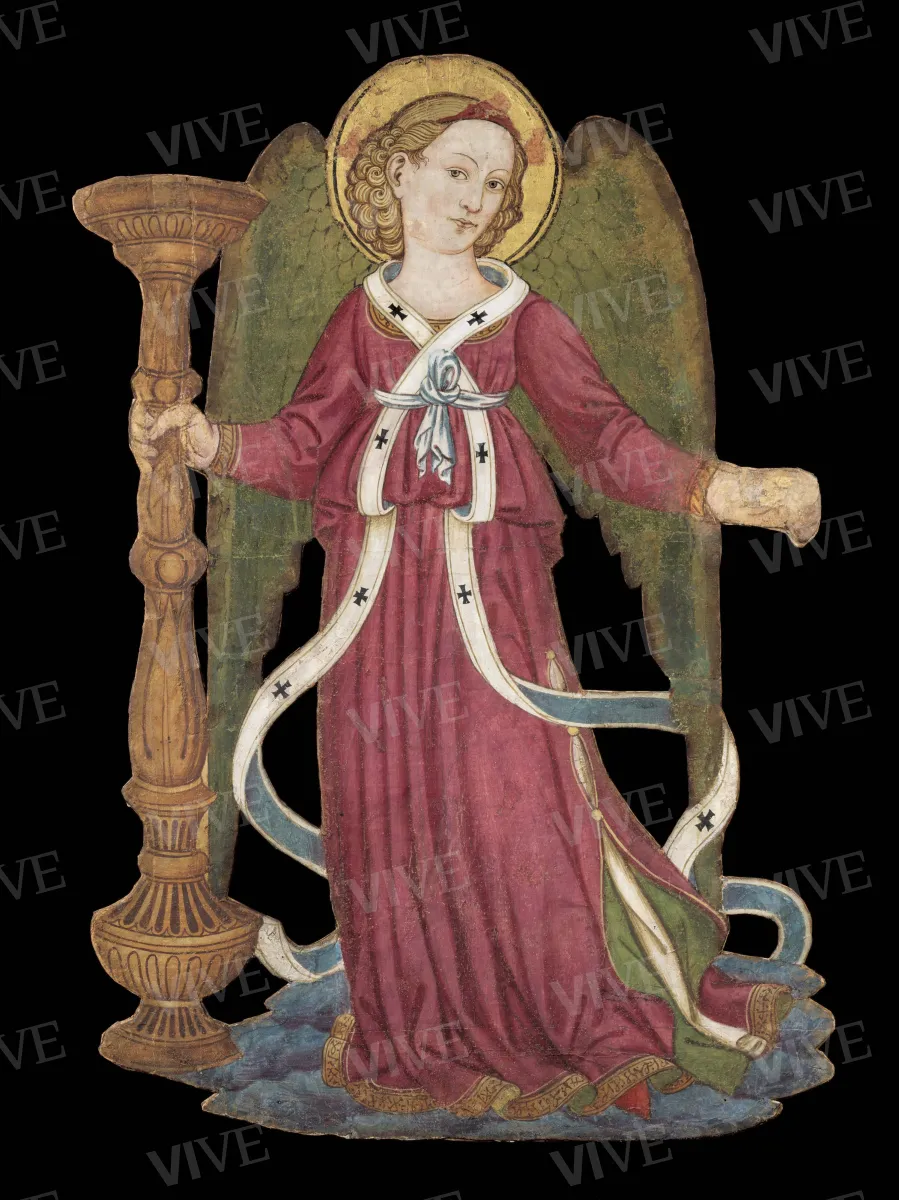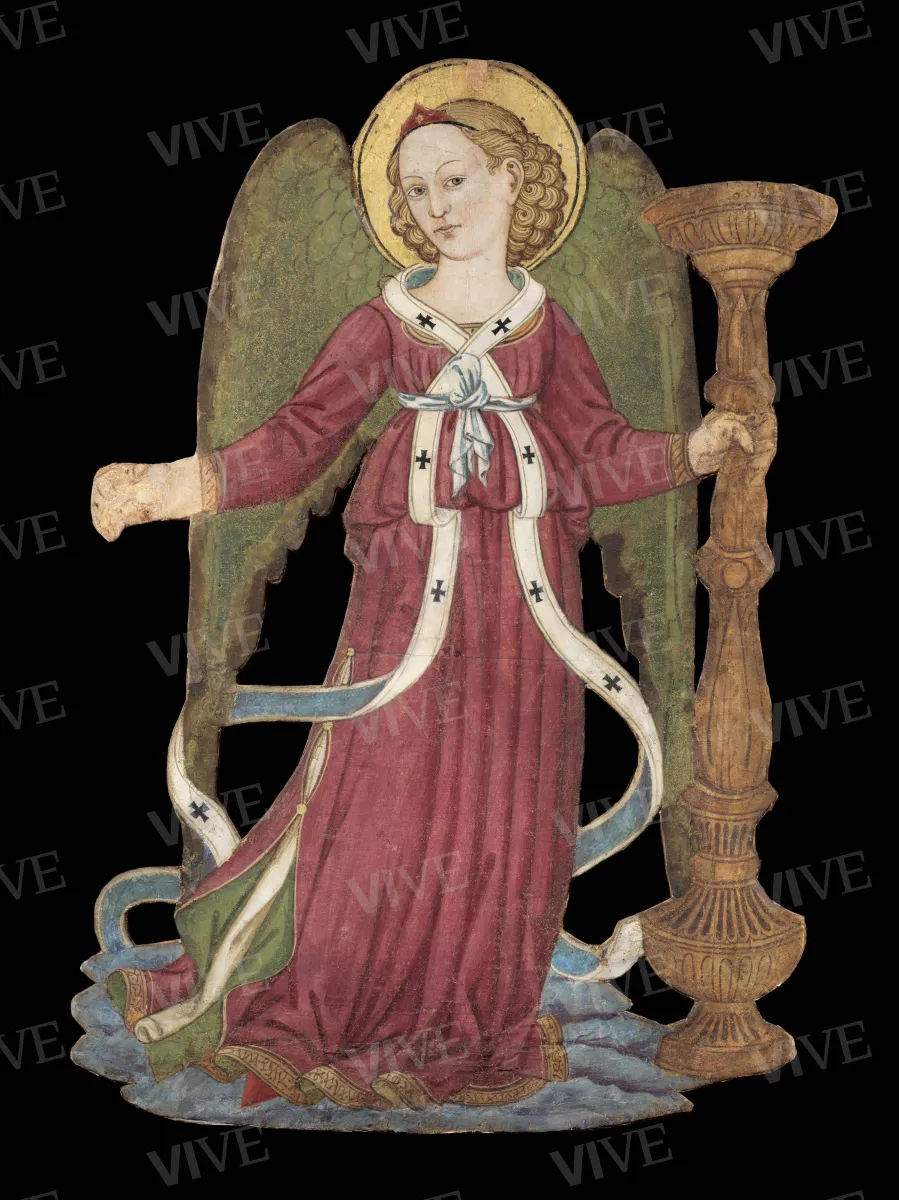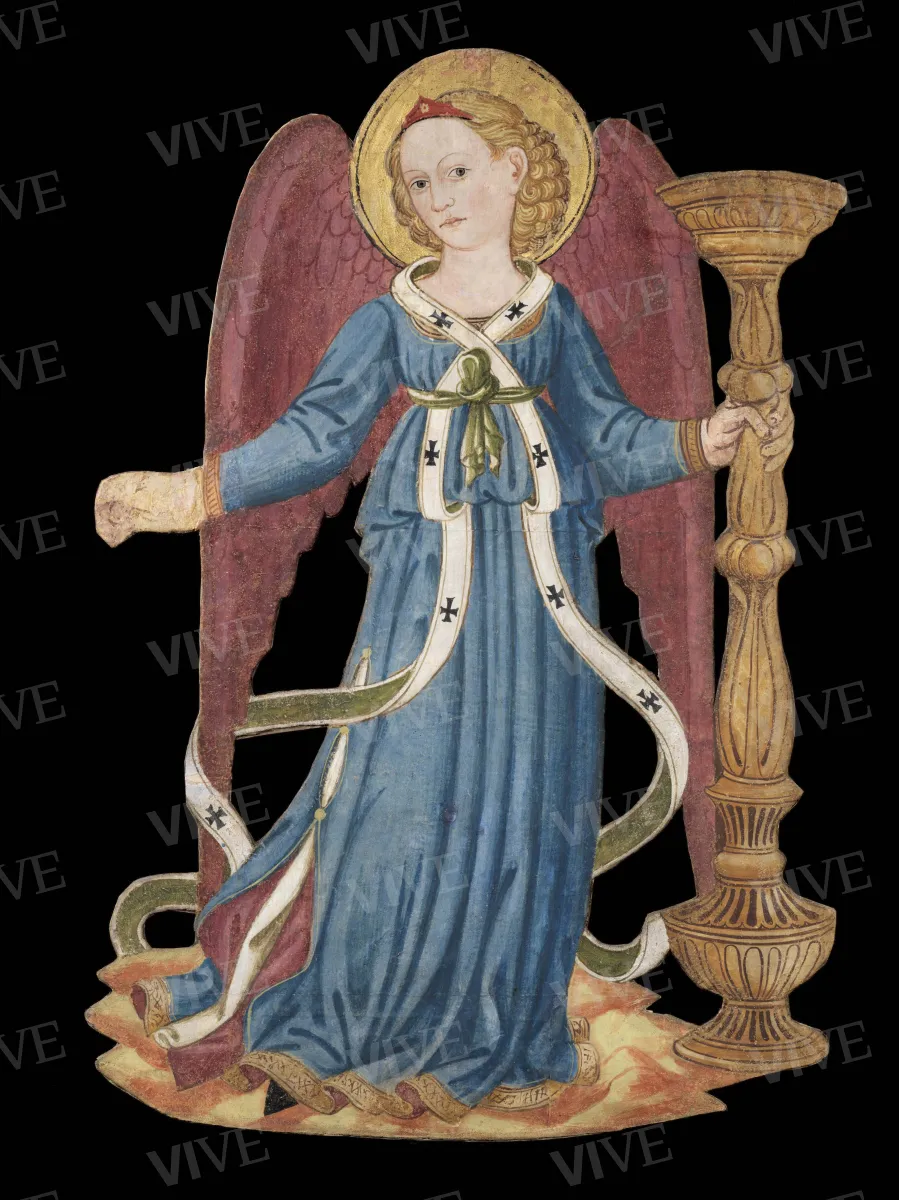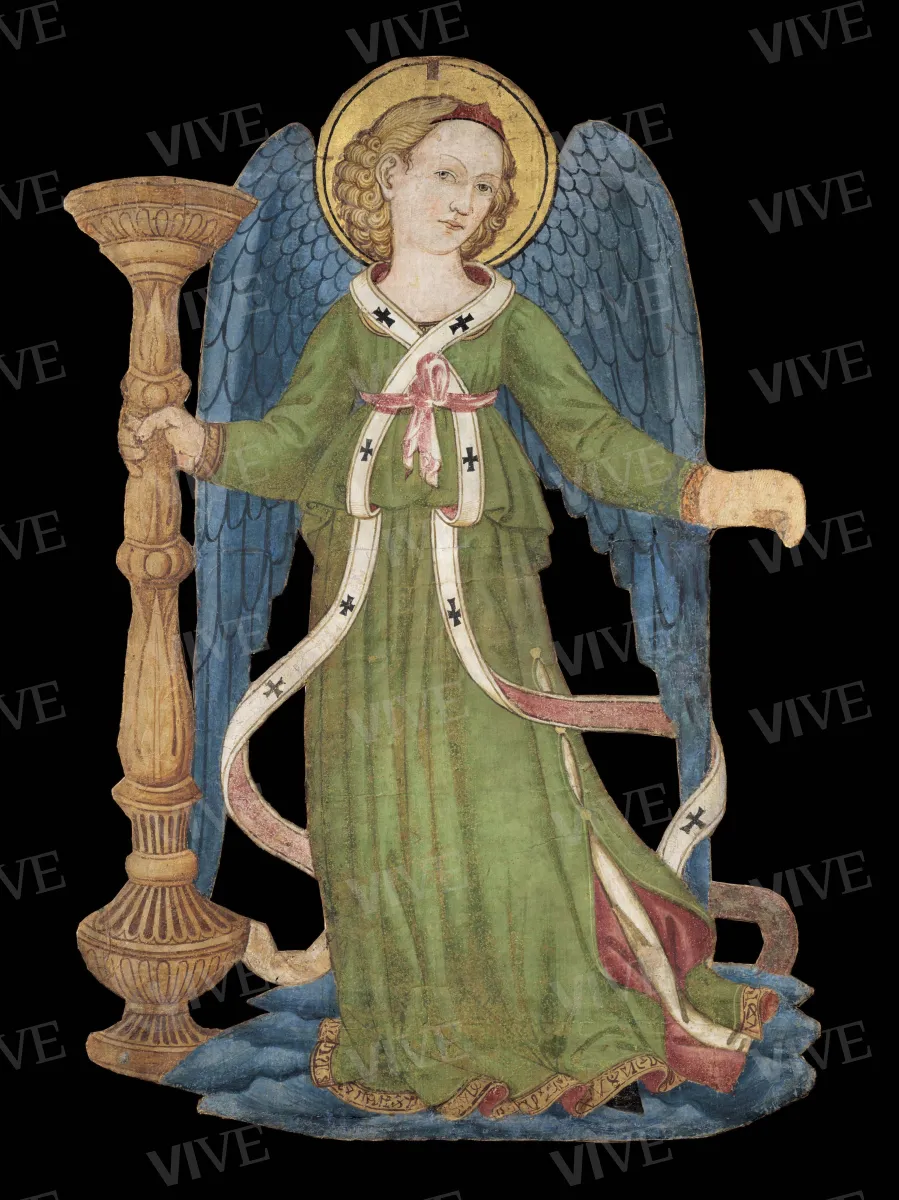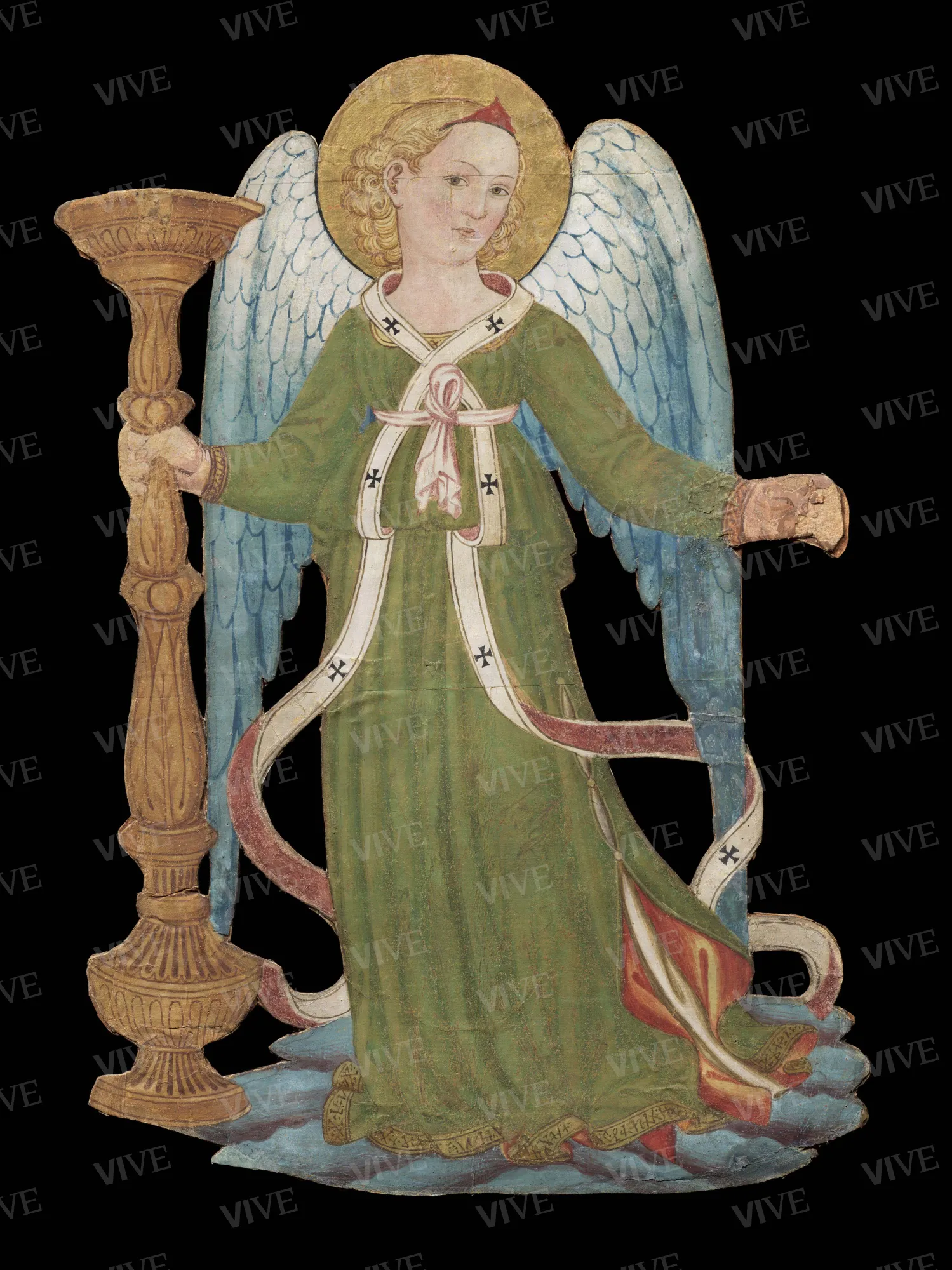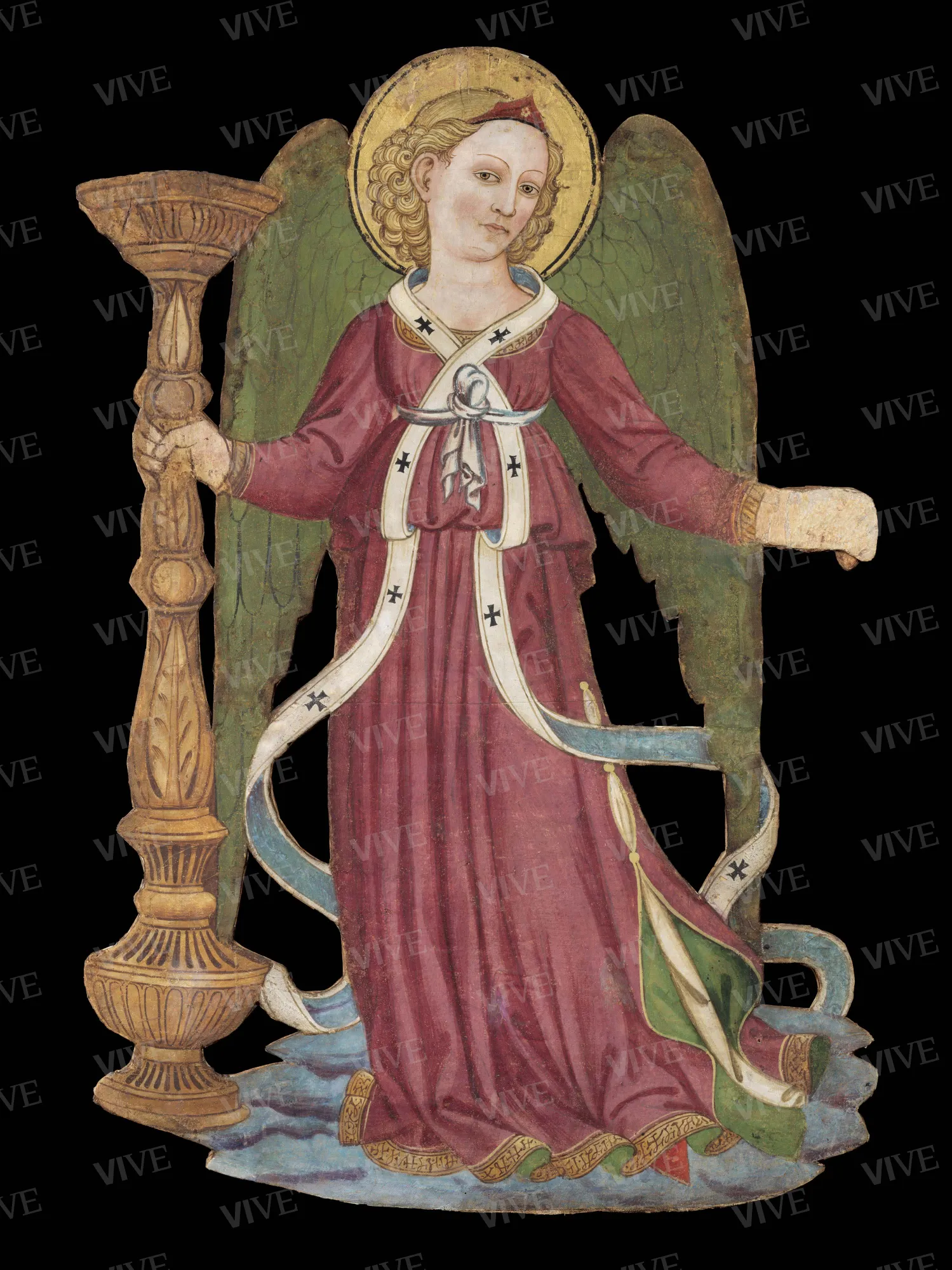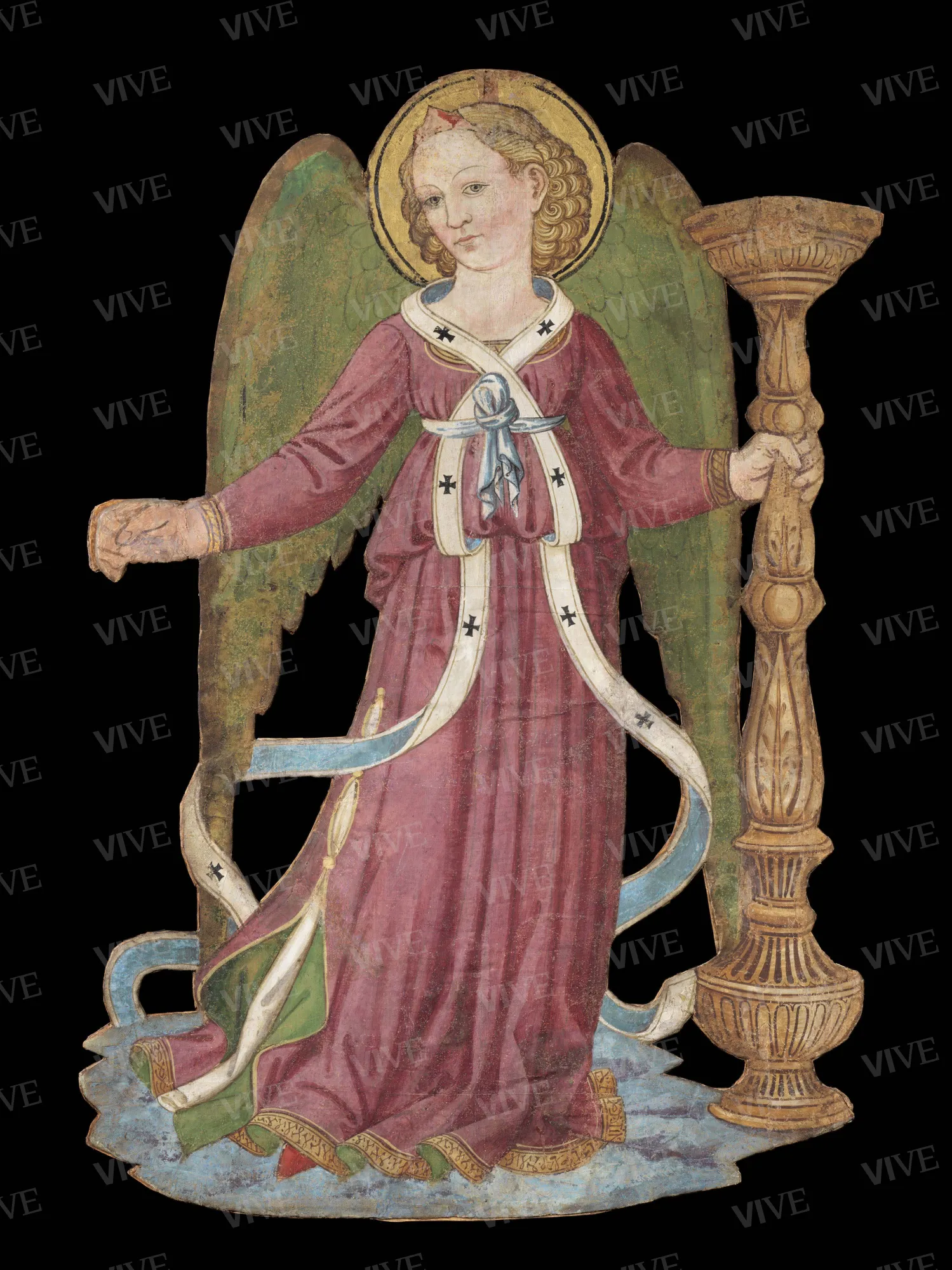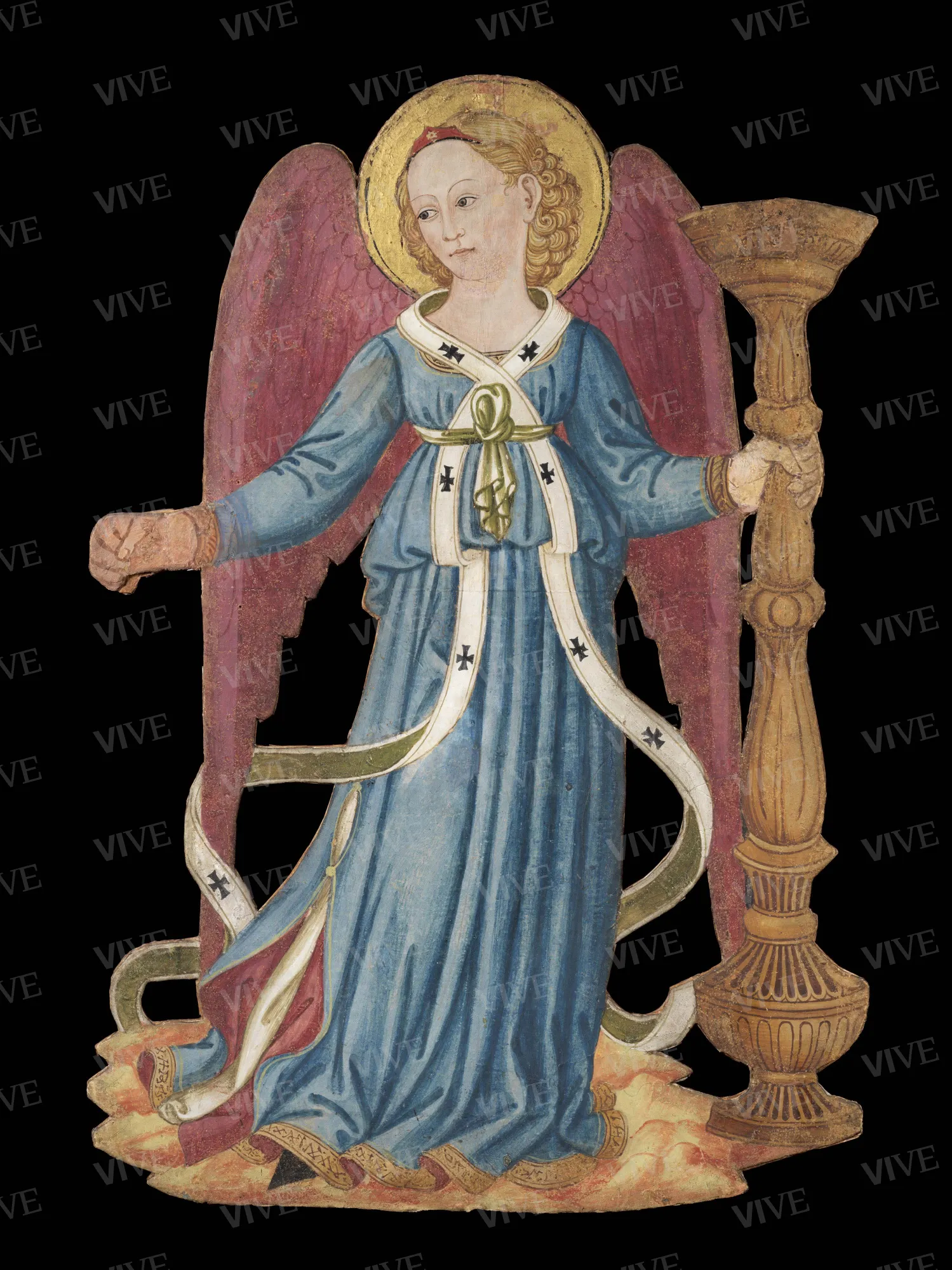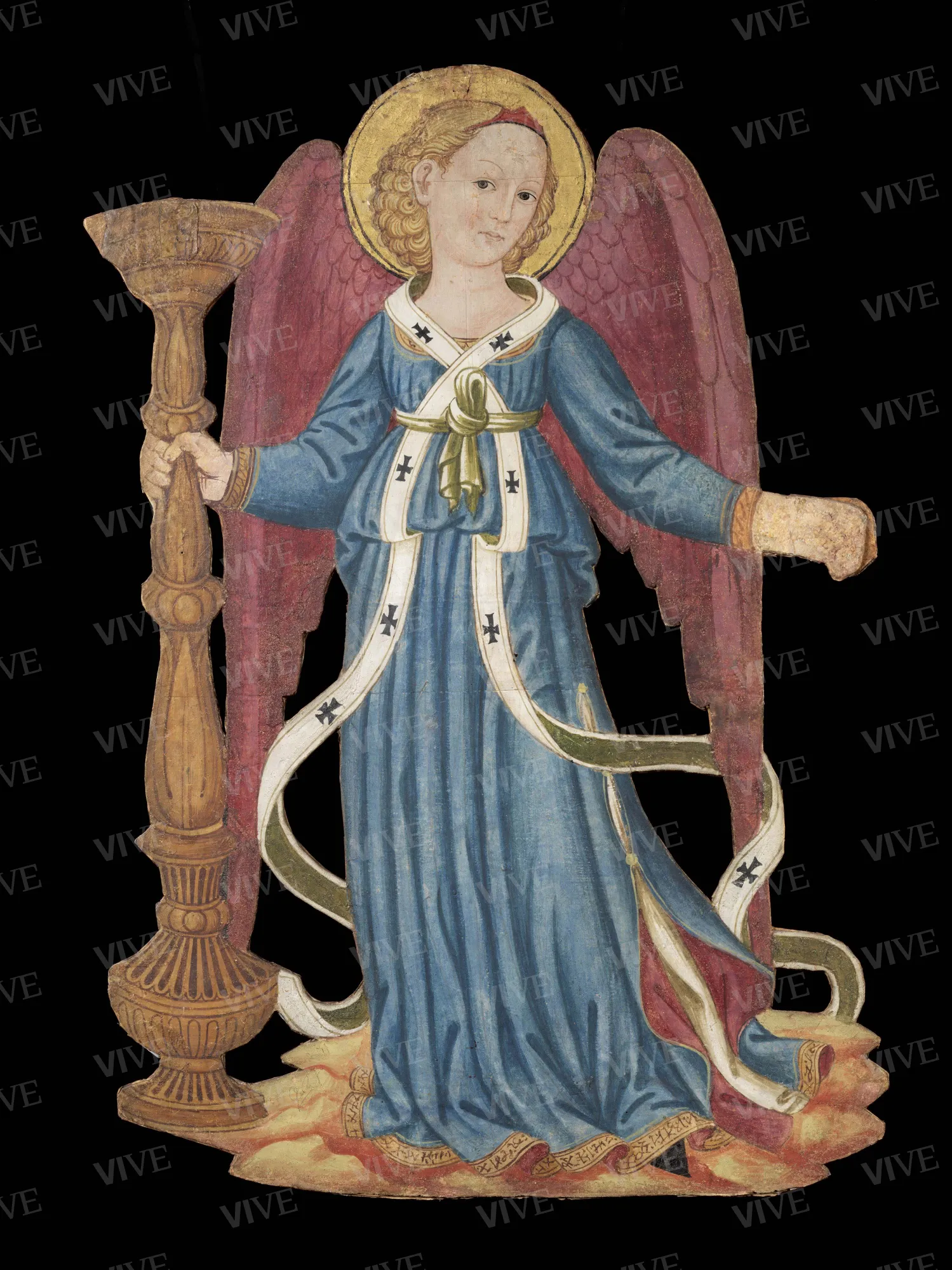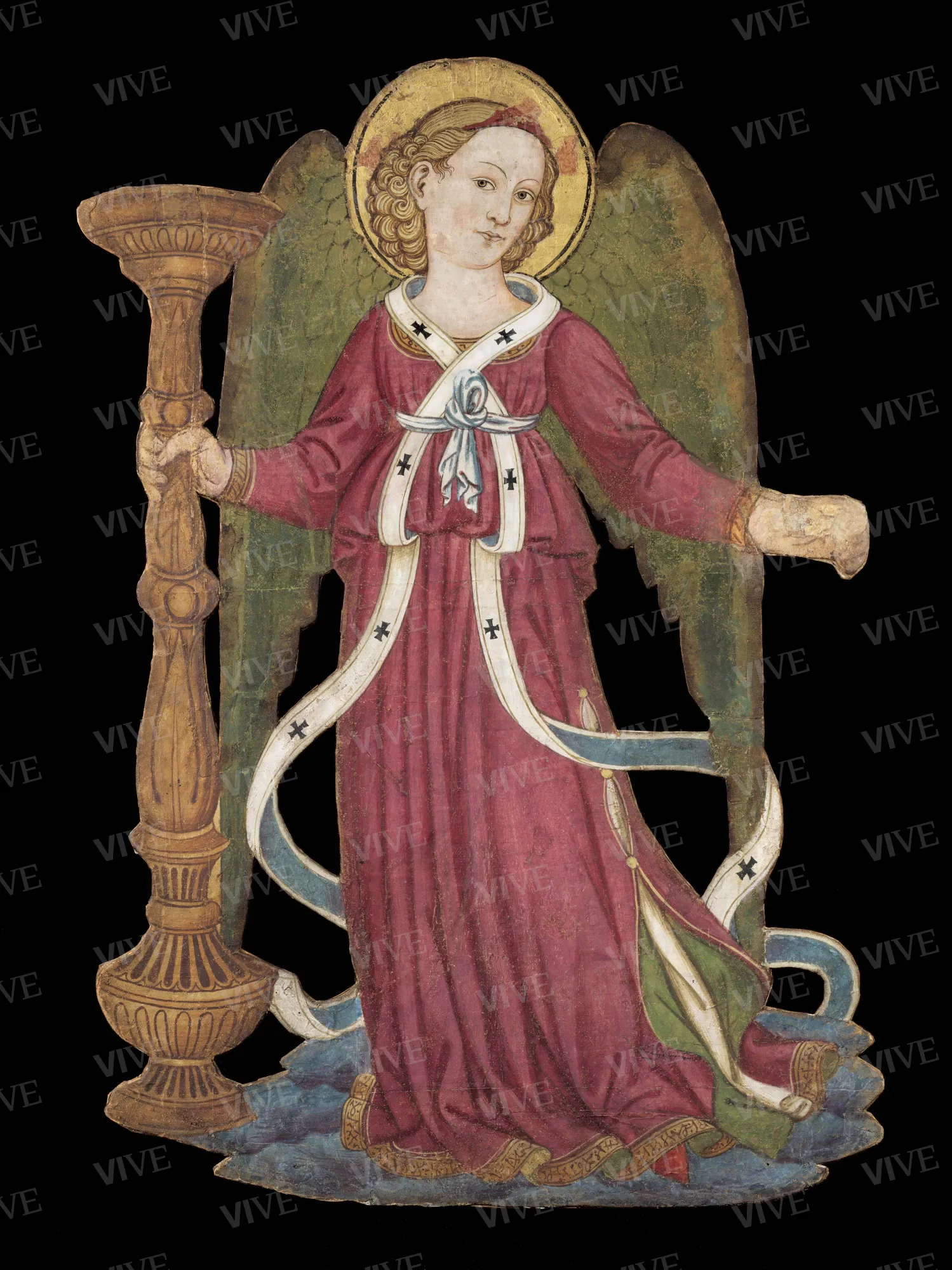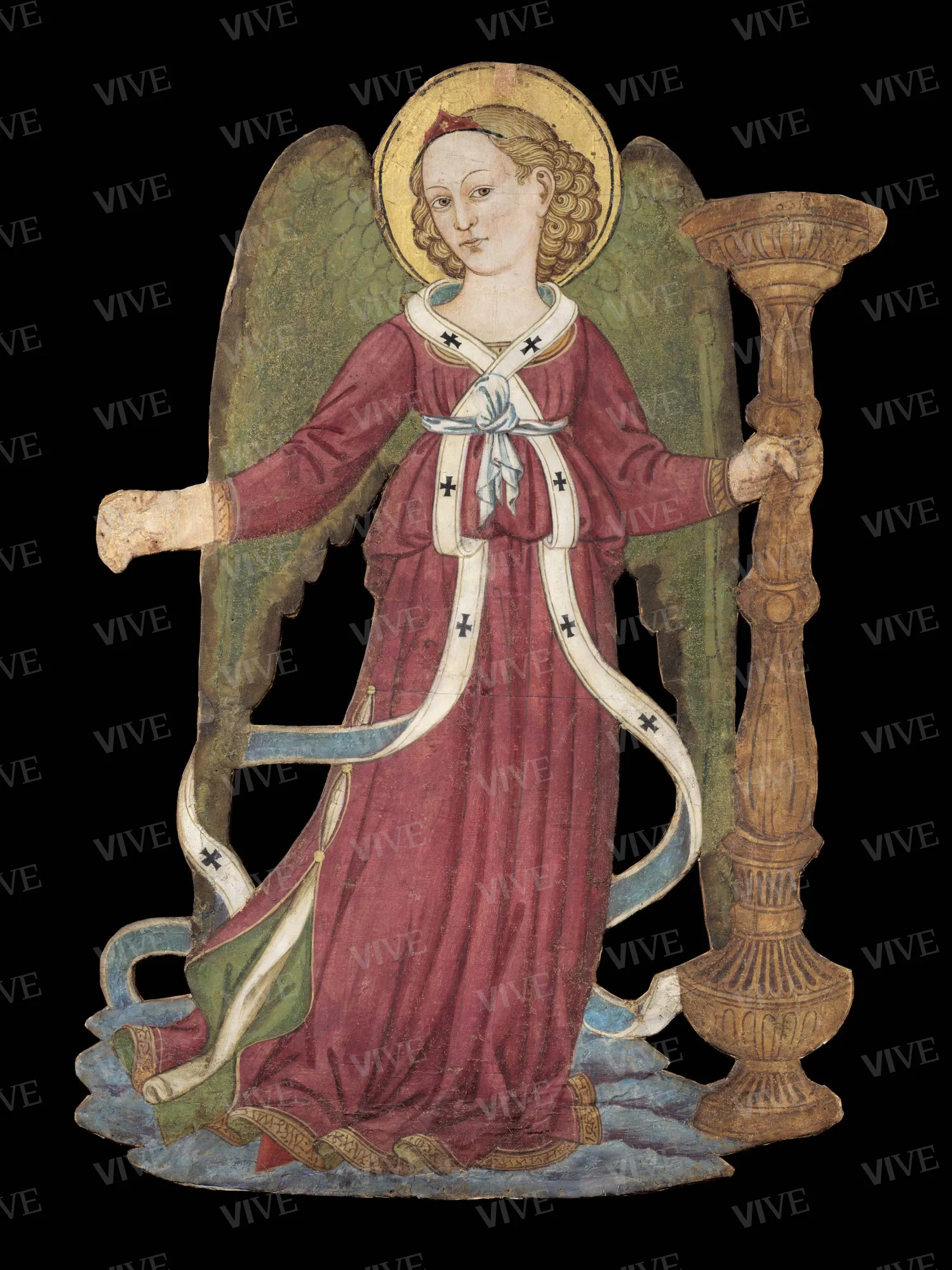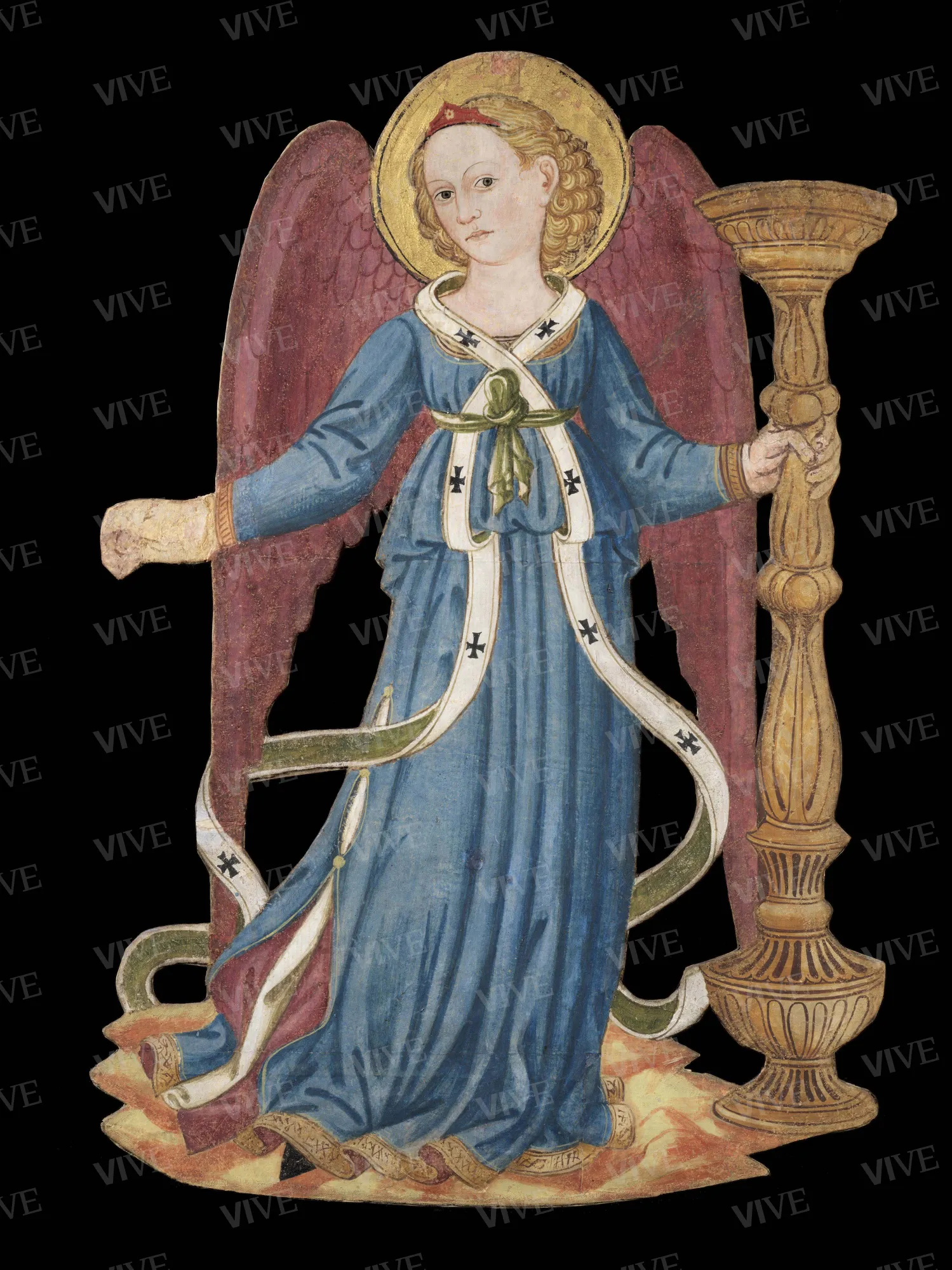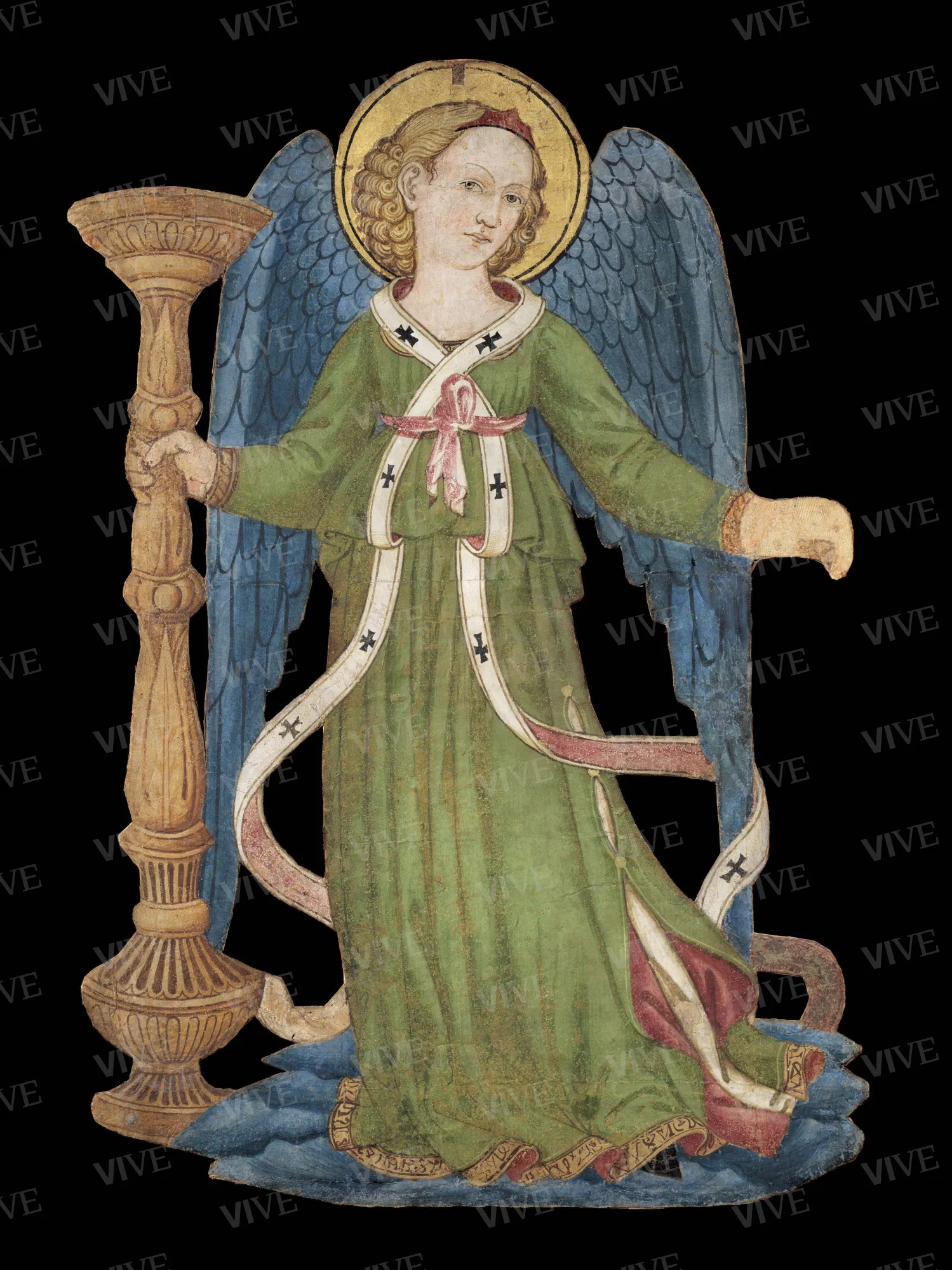Candle-bearing Angels
Master of the Angeli di Carta Third quarter of 15th century
Attributed to the anonymous Master of the Paper Angels, who is likely one of Domenico di Michelino’s collaborators, the ten candle-bearing angels originally come from the Wurts Collection. They were donated to the Museo di Palazzo Venezia in 1933 by Henriette Tower Wurts. Similar to those found in the Stibbert Museum in Florence and the Collezione Cagnola, these angels were originally designed as decorations for temporary installations. Equipped with candles, they were probably suspended from church ceilings during special liturgical events.
Attributed to the anonymous Master of the Paper Angels, who is likely one of Domenico di Michelino’s collaborators, the ten candle-bearing angels originally come from the Wurts Collection. They were donated to the Museo di Palazzo Venezia in 1933 by Henriette Tower Wurts. Similar to those found in the Stibbert Museum in Florence and the Collezione Cagnola, these angels were originally designed as decorations for temporary installations. Equipped with candles, they were probably suspended from church ceilings during special liturgical events.
Details of work
Catalog entry
These candle-bearing angels are part of a series, thirteen pieces of which survive today, located in the Collezione Cagnola in Gazzada Schianno (Varese province), the Palazzo Venezia Museum in Rome, and the Stibbert Museum in Florence. Other similar specimens, now dispersed, were noted at the Figdor Collection in Vienna and the British Museum in London (Ciardi 1965), despite not being exactly comparable to those under examination, though they likely shared similar functions. The thirteen surviving angels have consistent shape, size, and execution technique: they are made by joining two whole sheets and strips of cardboard, with broadcloth applied to the edges for reinforcement; the preparatory drawing, conducted on a single reused model, is in brown strokes and finished in tempera. Hovering over a cloud, each angel is depicted holding a candelabrum with one hand and an object, now missing, with the other. The angels have blond hair against a golden halo and wear diadems; their robes, edged in gold, are clasped at the waist by a laced cloth that holds the diaconal stole. The rare colors of the robes—ultramarine blue, red, and green—are also used to characterize other parts of the composition, such as the wings, clouds, and tunic linings.
Wax drippings on the candelabra and a visible nineteenth-century drip moulding on one specimen in the Cagnola collection suggest they were used as candleholders. It is plausible these angels were part of temporary decorations for churches during special solemnities. Rather than placed on altar sides (Cristiani Testi 1978), they were likely intended to be hung from ceilings, supported by hooks seen on the piece in the Stibbert Museum in Florence (Pittiglio 2007). This hypothesis is confirmed by comparing them to a detail in the 15th-century fresco Distribution of Alms by Domenico di Bartolo in the Pellegrinaio di Santa Maria della Scala in Siena, where similar artifacts are shown hooked to a “wheel” chandelier (Parenti 2017).
It was proposed that these candle-bearing angels date back to festivities and religious performances in 1471 in the Oltrarno district during the visit to Florence by the dukes of Milan, Galeazzo Maria Sforza and Bona di Savoia. Expense records from the companies that commissioned the performances mention materials (tempera, paper, canvas, cardboard) corresponding to those of the angelic forms, “similtudine d’angioli” along with the artificial skies and clouds used in Florentine church decorations (Ventrone 2009; Ventrone 2016, p. 62, footnote 91).
Lorenzo Mascheretti
Entry published on 27 March 2025
State of conservation
Fair. Based on the characteristics of the specimen in the Stibbert Museum in Florence, which appears to be double-sided consisting of two silhouettes glued together, it has been hypothesized that the other pieces were initially also paired. This is further supported by the matching colors of the angels’ garments. During the nineteenth century, the pairs were separated and individually mounted on wooden frames, possibly to enhance their appeal in the antiques market, which caused perforation of the paper surface.
Restorations and analyses
During the restoration of pieces at the Museo di Palazzo Venezia in 1994–1995, conducted by Immacolata Afan de Rivera, the frames and joined silhouettes were removed. In a subsequent conservation intervention led by Elisabetta Marmori in 2006, efforts were made to restore the original appearance of the works by re-joining four pairs of silhouettes using a reversible method. The remaining unpaired angels in Palazzo Venezia are likely matched with the pieces in the Collezione Cagnola.
Inscriptions
Handwritten sheets found in fifteenth-century account books were used as waste material in the creation of the artifacts (Vigliarolo 2007, pp. 19–20).
Provenance
Rome, George Washington Wurts and Henrietta Tower collection;
Rome, Museo Nazionale di Palazzo Venezia, donated by Henrietta Tower Wurts, 1933.
Exhibition history
Jackson, Mississippi Museum of Art, Between God and Man: Angels in Italian Art, June 9–December 30, 2007;
Rome, Museo Nazionale del Palazzo di Venezia, Gli Angeli alla corte dei Medici. Fragili apparati scenici per le grandi feste popolari, December 20, 2007–April 30, 2008.
References
Zeri Federico (a cura di), Catalogo del Gabinetto Fotografico Nazionale. 3. I dipinti del Museo di Palazzo Venezia in Roma, Roma 1955;
Ciardi Roberto Paolo, La raccolta Cagnola, dipinti e sculture, Milano 1965, p. 36, catt. 16-17;
Cristiani Testi Maria Laura, Essemplo, modello, natura, fantasia nella cultura artistica toscana del ’300, in «Critica d’Arte», 157-159, 1978, pp. 47- 72;
Todini Filippo, La pittura umbra dal Duecento al primo Cinquecento, vol. I, Milano 1989;
Parenti, in Boskovits Miklós, Fossaluzza Giorgio (a cura di), La collezione Cagnola, vol. I (I dipinti dal XIII al XIX secolo), Busto Arsizio 1998, pp. 84-86, cat. 10.11;
Parenti, in Scudieri Magnolia, Rasario Giovanna, a cura di, Miniatura del ’400 a San Marco. Dalle suggestioni avignonesi all’ambiente dell’Angelico, catalogo della mostra (Firenze, Museo di San Marco, 1 aprile-30 giugno 2003), Firenze 2003, pp. 209-210, cat. I.58;
Bernabei, in Buranelli Francesco (a cura di), Between God and Man: Angels in Italian Art, catalogo della mostra (Jackson, Mississippi Museum of Art, 9 giugno-30 dicembre 2007), Jackson 2007, p. 129, cat. s.n.;
Sconci Maria Selene (a cura di), Gli Angeli alla corte dei Medici. Fragili apparati scenici per le grandi feste popolari, catalogo della mostra (Roma, Museo Nazionale del Palazzo di Venezia, 20 dicembre 2007-30 aprile 2008), Roma 2007;
Pittiglio Gianni, Gli angeli in cartapesta del Museo Nazionale del Palazzo di Venezia: funzione, contesto e vicende attributive, in Sconci Maria Selene (a cura di), Gli Angeli alla corte dei Medici. Fragili apparati scenici per le grandi feste popolari, catalogo della mostra (Roma, Museo Nazionale del Palazzo di Venezia, 20 dicembre 2007-30 aprile 2008), Roma 2007, pp. 9-14;
Vigliarolo, in Sconci Maria Selene (a cura di), Gli Angeli alla corte dei Medici. Fragili apparati scenici per le grandi feste popolari, catalogo della mostra (Roma, Museo Nazionale del Palazzo di Venezia, 20 dicembre 2007-30 aprile 2008), Roma 2007, pp. 9-14;
Ventrone Paola, La propaganda unionista negli spettacoli fiorentini per il concilio del 1439, in Lazzi Giovanna, Wolf Gerhard (a cura di), La stella e la porpora. Il corteo di Benozzo e l'enigma del Virgilio Riccardiano, Atti del convegno di studi (Firenze, 17 maggio 2007), Firenze 2009, pp. 23-47;
Fachechi Grazia Maria, George Washington Wurts, Henriette Tower, una collezione di “curiosità e opere d’arte” e una villa “magnificent, the handsomest ever bestowed on Rome”, in Perini Folesani Giovanna, Ambrosini Massari Anna Maria (a cura di), Riflessi del collezionismo tra bilanci critici e nuovi contributi, Atti degli convegno (Urbino 2013), Firenze 2014, pp. 339-357;
Bernacchioni, in Tartuferi Angelo, D’Arelli Francesco (a cura di), L’arte di Francesco. Capolavori d’arte italiana e terre d’Asia dal XIII al XV secolo, catalogo della mostra (Firenze, Gallerie dell’Accademia, 31 marzo-11 ottobre 2015), Firenze 2015, pp. 242-244, cat. 35;
Ventrone Paola, Teatro civile e sacra rappresentazione a Firenze nel Rinascimento, Firenze 2016;
Parenti, in Pellegrini Emanuele (a cura di), Voglia d’Italia. Il collezionismo internazionale nella Roma del Vittoriano, catalogo della mostra (Roma, Palazzo Venezia; Gallerie Sacconi al Vittoriano, 7 dicembre 2017-4 marzo 2018), Roma 2017, pp. 204-209, cat. 3.7;
Gritti Jessica, Donato Bramante e il battesimo di Francesco Sforza conte di Pavia, in «Arte lombarda», 188, 2020/1, pp. 32-52.

